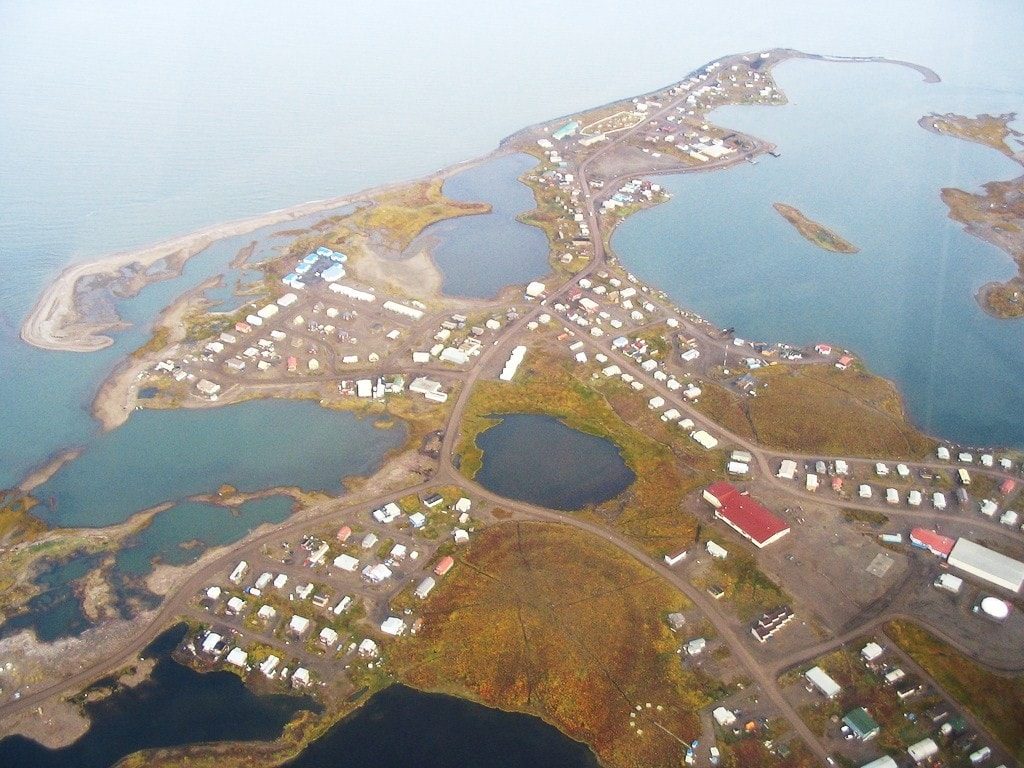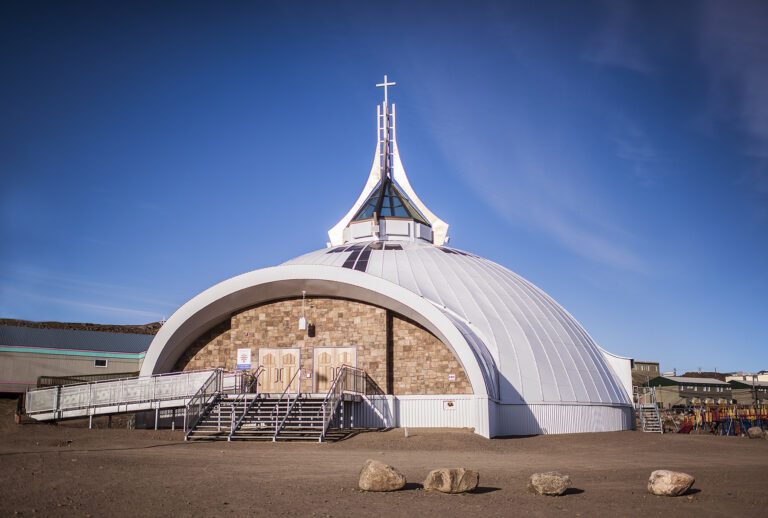Sometime in 2017, the first traffic will start rolling down the 120-kilometre highway between Inuvik and Tuktoyaktuk.
While it is important to hedge against the significance-inflating grandiloquence of government press releases (they love to say the road will finally connect Canada “from coast to coast to coast”), the Inuvik-Tuk highway remains a project of major regional importance, even if it isn’t quite vital to the national interest.
Wherever it leads to
For Tuk, it means year-round ground transportation, and the prospect of more tourists and cheaper goods. The federal government also believes it will strengthen Canadian sovereignty over the Arctic, although how exactly it will do this is never explained.
It also means the potential for increased oil and gas exploration activity, and, if we want to get ahead of ourselves a bit, some attendant megaprojects.
Whether or not the Inuvik-Tuk highway ever leads to petroleum development is, of course, a decidedly open question. But the road will open regardless, at a cost of $300 million, two-thirds of which is being covered by Ottawa.
The cost of maintaining this road, of course, falls upon the territorial government. During a construction update Monday, Kevin McLeod, the GNWT’s project director, told reporters that annual maintenance for the Inuvik-Tuk road will fall within the typical range for highways in the NWT: somewhere between $2,000 and $8,000 per kilometre, per year.
For the whole road that works out to a ballpark annual maintenance cost of $250,000 to $1 million per year, which, while significant, is not going to break the bank. (And, for what it’s worth, the highway’s location on what is largely treeless, open tundra has the convenient effect of reducing snowplowing costs, since the snow mostly blows right off the roadbed, McLeod said.)
Permafrost-proofing
The big unknown is how the road will react to climate change over its 75-year design life. McLeod said the most recent similar project was the construction of the Dempster Highway, which links Inuvik to the Yukon, and which was built in halting stages between 1959 and the 1970s. But unlike that project, where cuts were simply blasted through the permafrost, the Inuvik-Tuk highway is built on top of the permafrost, using geotextiles and a lot of gravel. “We have not touched the permafrost,” McLeod said. “We’re protecting it.”
The long-term outlook for permafrost in the NWT is of great concern to climate scientists and transportation planners alike. The territory is warming faster than most places on Earth and there’s a great degree of consternation about the rate at which permafrost is melting here.
“These changes are having adverse impacts on infrastructure systems such as airstrips, pipelines, roads, railways, water facilities and building foundations—a trend that is expected to continue in the future,” said a 2013 study by the International Institute for Sustainable Development.
Scientists and transportation officials have a keen interest in determining what those impacts will be. McLeod said that in addition to the core funding from Ottawa, Transport Canada ponied up $670,000 to use experimental road-building techniques at two sites along the highway.
At one of the sites, crews will install plastic culverts instead of metal ones. That may not sound like exciting science, but the idea is to reduce the amount of heat that gets into the roadbed via the corrugated metal used in traditional culverts. At the other, scientists from the University of Manitoba will build an embankment with layers of gravel and geotextiles. The whole thing will be laced with sensors to study how much the surrounding soil moves.
“This is a project [we] haven’t seen the like of around the world,” McLeod said. “With heavy ice content and permafrost, [there are] lots of scientists interested in how the road will perform.”
Considering that Tuktoyaktuk is already basically sinking into the Beaufort Sea courtesy of climate change, one might wonder why you’d want to crow about building a road to open up the area to oil and gas development, as the federal and territorial governments have done.
Still, when it’s finished, the road will mark a major change for Tuktoyaktuk: cheaper food and goods, less isolation for people and more opportunities for businesses. Plenty of good will come of this road.
So here’s hoping Tuktoyaktuk doesn’t slide into the ocean at some point in the next 75 years. But if it does, at least politicians will still be able to say the Inuvik-Tuk highway connects this great land from coast to coast to coast.






